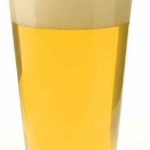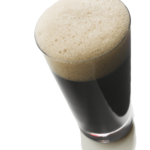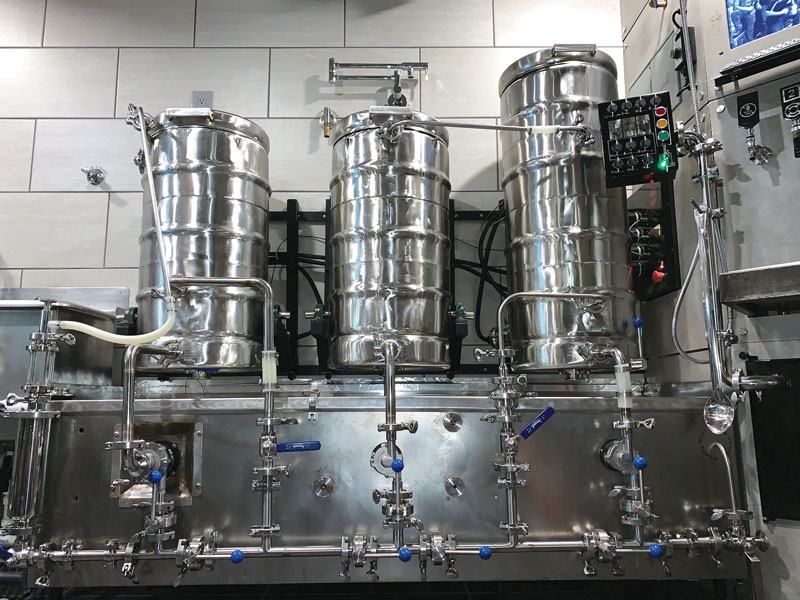Beer Style: Pale Ale Family
Choc clone
This beer has had many different variants. This clone recipe is close to the current version, which is a cloudy, unfiltered wheat/barley beer with some funky ale flavors, 4.0% alcohol, lots of fruitiness from a warm fermented Hefeweizen yeast. Choc is bottle conditioned, and not filtered prior to bottling, so it can have large amounts of sedimentation at the bottom of the bottle. There is also a bit of lemony flavor to Choc, typical of a wheat beer.
Not-Quite-Amber Waves of Grain
The American wheats I’ve been tasting at competitions lately take the best of American pale ale, add some nice low-Lovibond character maltiness and wheat, and back off the IBUs so you can actually appreciate the flavors. This one was a silver medal winner at the Philly Homebrew Cup.
Grantham Mild
The best thing about brewing a mild is that you get to dial up pretty much all of your favorite malt flavors, in whatever ratio you’d like, in a session-strength beer – and all you need to do is back out the black barley and sub in a bunch of fun character malts. You can still have a touch of roast in there (if you want), but you also get biscuit, toffee, nut, molasses, toast, plum, raisin . . . you get the picture.
Wild Card Brewery’s King of Hearts Blonde clone
This is a slightly modified version of the recipe for King of Hearts, one of Wild Card’s core range of beers. It’s a light and refreshing pale beer with fresh aromas and a clean finish.
Cologne Kölsch
The word Kölsch has several connotations in the German language. If used as a noun, it refers to the distinct Cologne dialect and accent. As an adjective, it means “anything from Cologne.” Thus, it is a local joke that Kölsch is the only language that you can also drink!
Düsseldorf Altbier
The grain bill of the classic copper-colored altbier — which is internationally also known as a German Brown Ale — is almost Munich-like, but with a slightly less “caramelly” character than a Märzen, and less dark than a dunkel. It differs from a Munich brew, however, in its much more pronounced hoppiness. This creates a wonderful blend of malt-and-hop aromas in the finish, which is often described as bitter-sweet. The uniqueness of this beer — an ale after all — comes from the clean fermentation of a relatively cold-tolerant, top-fermenting specialty yeast.
Dream Cream Ale
With such a high percentage of flaked grains, some rice hulls maybe a good addition to the mash in order to help loosen things up.
Legend Brewing Co.’s Utebier clone
“The term Utepils translates from Norwegian loosely into ‘the beer you enjoy outside on the first warm day of springtime’. We obviously brewed an ale, not a Pilsner, but wanted the beer to mimic the refreshing quality while still being full-flavored.” – John Wampler; Brewmaster at Legend Brewing Co.
Bone Idle Bitter
A schwarz’ed version of an English bitter.
Aurora (Not So) Blonde Ale
One evening after a scrumptious lemon-rosemary chicken meal prepared by my wife, Raven, we got to talking about what kind of beer would go with lemon and rosemary and this recipe was the result. The original version of this recipe appeared in the JAN/FEB 2006 issue of Brew Your Own.
Tafelbier
Similar to Trappist single, Tafelbier is a low-gravity session style beer with a nice Belgian character in the background that is a great beer to drink on brew days when you need to keep your wits about you but would also like to have a few beers. It also has a quick turnaround, so it’s perfect for brewing when you need a beer for a fast-approaching event.
Bombing Range Brewing Co.’s Medusa Dry Hopped Pale clone
This beer from Bombing Range Brewing (Richland, Washington) had limited availability but was easily one of the best using MedusaTM that I personally had. Founder and Head Brewer Mike Hopp describes it as a smooth, easy drinker with huge stone fruit and apricot flavors and aroma.












